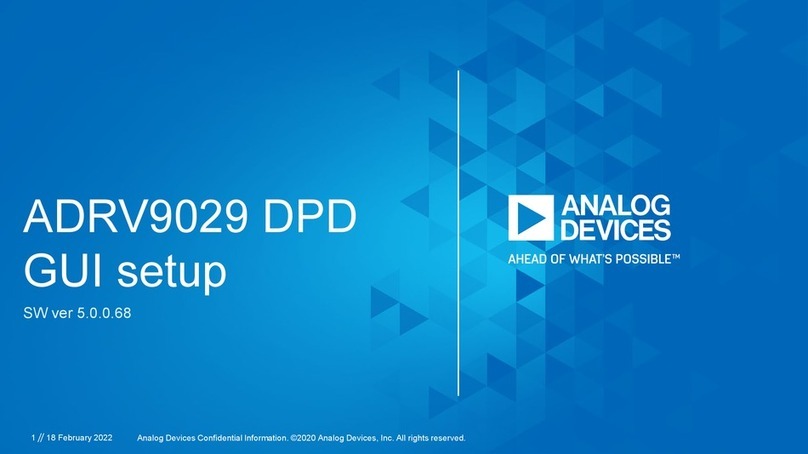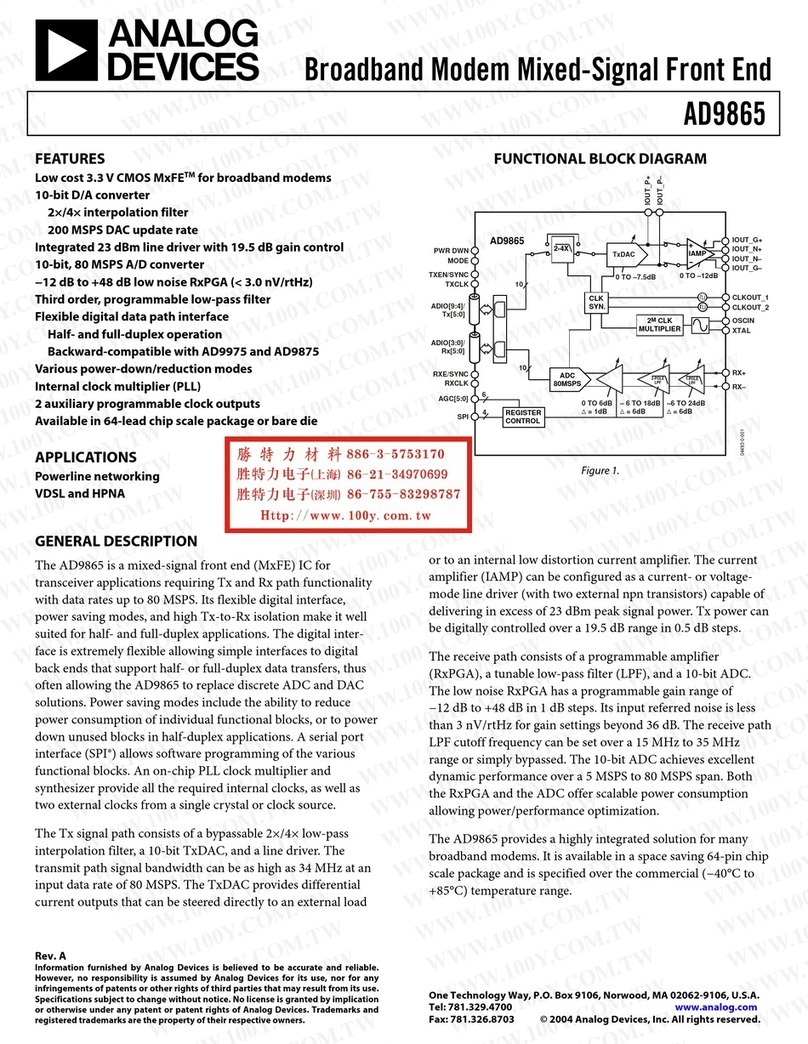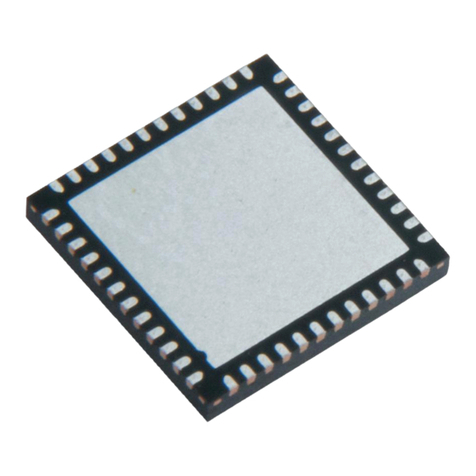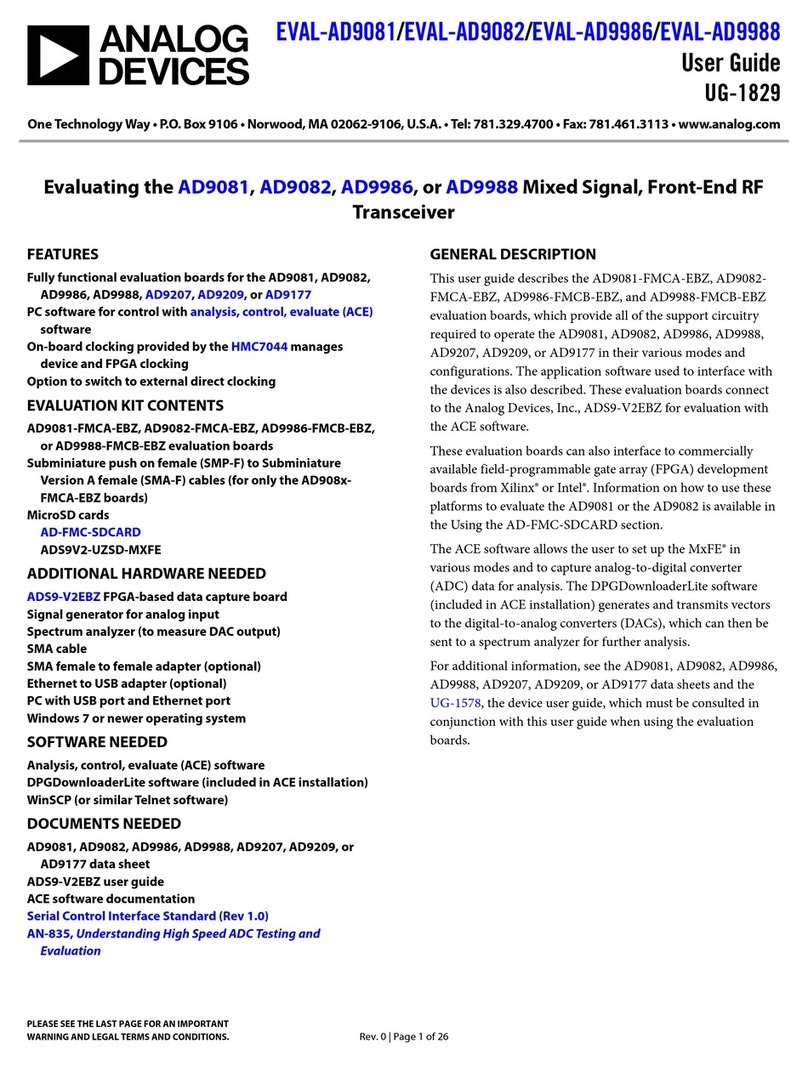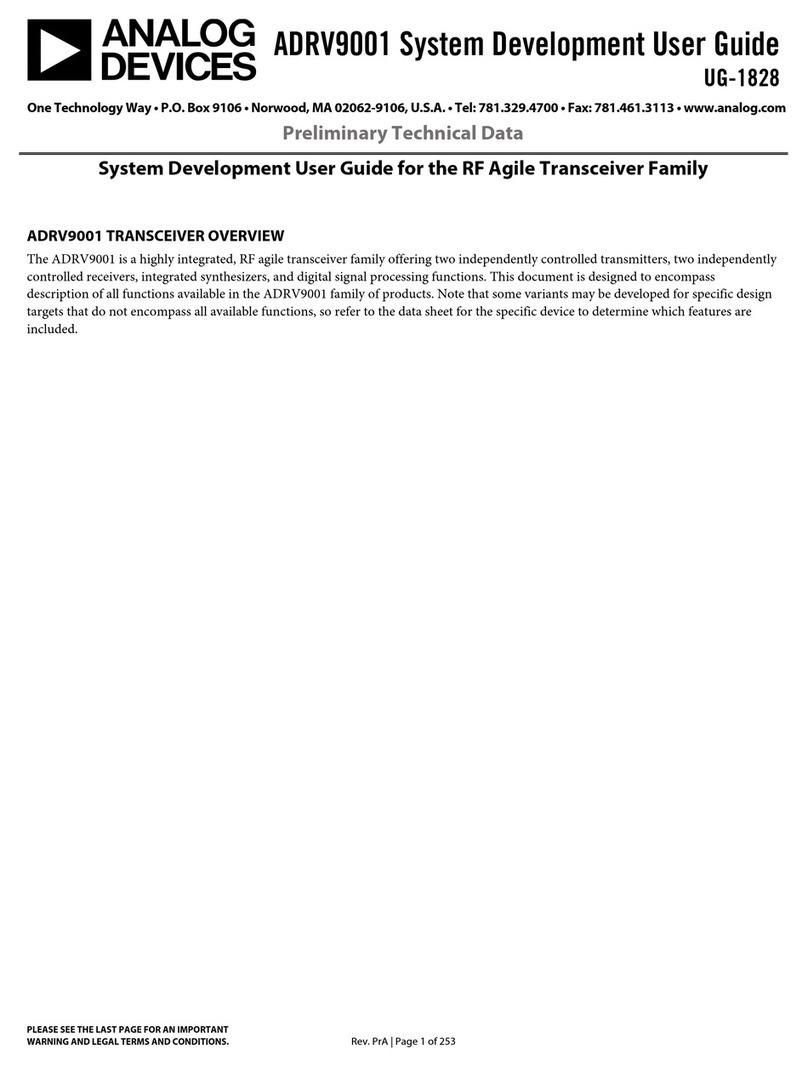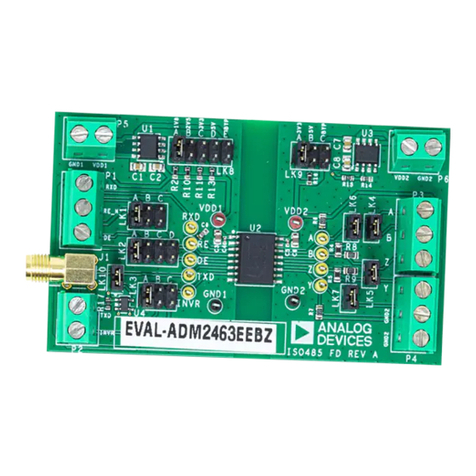
Preliminary Technical
Data
Rev. PrA | Page 9 of 82
Figure 11. DPD Direct Learning Coefficient Computation
The direct learning outcome is an iterative solution, where the current coefficients are based on memory of previously computed
coefficients and currently estimated coefficients ( C ).
The Direct Learning approach uses a parameter, μ, which is the convergence factor that defines the step size for learning
coefficients. The convergence factor μlies in the range [0% to 100%] and is user configurable in the transceiver using the API
adi_adrv9025_DpdTrackingConfigSet() through the parameter adi_adrv9025_DpdTrackingConfig_t.dpdMu.A higher value of the
convergence factor μwould result in faster convergence. However, a really high value of μmight result in an unstable system. The
user can start with a convergence factor of 50% and tune the value based on characterization of the system for convergence time
and stability.
Comparison Between DPD Indirect Learning and Direct Learning
•The DPD indirect learning algorithm is time efficient, since it estimates coefficients through inversion in a single update. The
DPD indirect learning algorithm is preferred when a quicker adaptive response is required by the system.
•The DPD direct learning algorithm is more accurate but iterative in nature as highlighted in the previous section and
requires a longer time to converge compared to indirect learning. The direct learning algorithm is less sensitive to
bandwidth mismatches and is preferred when the signal bandwidth is more than 100 MHz (for example, 2xNR100 or
8xLTE20 systems).
DPD Coefficient Estimation
The maximum number of coefficients is limited to 190 (M = 190), and the number of samples used to calculate the coefficients is
typically 16384 samples (N = 16384). Although the number of samples N is user configurable using the API
adi_adrv9025_DpdTrackingConfigSet(), ADI recommends setting the number of samples to 16384, which provides a good
balance between estimation time and sample size.
The DPD algorithm runs on a dedicated ARM processor (ARM-D) and calculates the coefficients corresponding to GMP terms of
the inverse PA model. This model pre-distorts the digital baseband signal before digital-to-analog conversion and transmission of
samples to the transmitter upconverter (this output becomes the RF input to the PA). The PA output is sampled using an external
loopback to an observation receiver channel input.
The DPD engine then correlates the observation receiver and transmitter samples to calculate the latest set of coefficients. The
DPD engine performs a brief check on model error before updating the LUTs that feed the correction coefficients into the DPD
actuator hardware. Details regarding the GMP model, the actuator and the LUTs are provided in sections to follow. Due to the
relatively simple implementation of this algorithm, the overall time taken to react to sudden changes in transmit waveforms is
relatively short and is typically less than 1 second per transmitter channel (actual time depends on the configurable parameters
of the DPD and ARM scheduling). Certain protection criteria are designed into the algorithm to prevent damage to the PA due to
large model errors. The DPD algorithm is scheduled once every second per transmitter channel in the firmware, which means the
coefficients are updated once every second per transmitter channel.
GMP Model and Look Up Table
For wideband signals such as LTE and 5GNR, PAs begin to exhibit short-term memory effects. These are effectively non-uniform
frequency responses in certain components like the biasing network, decoupling capacitors, or supply circuitry. A given output of
the power amplifier depends not only on the current input, but also on past input values (similar to an FIR filter model). These
memory effects can usually be captured with memory taps in the model if the PA frequency response is locally smooth over the
band. As bandwidth increases, more memory taps are required to accurately model the PA.
